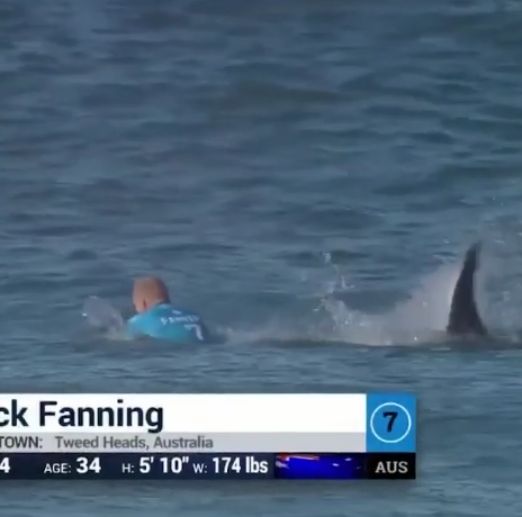Shark attack, can you really avoid it? Yes - mostly out of the water.

A shark attack is sudden, visceral and overwhelming. And it's impossible to be a tough guy in the face of one. For Americans, the lifetime risk of dying from a shark attack is approximately 1 in 3.7 million. That means you have a greater chance of dying from heart disease (1 in 5), being killed by lightning (1 in 79,746) or experiencing death by fireworks (1 in 340,733).
But anyway, if a shark attacks you, defend yourself aggressively. Playing dead will not work ... (1)
The same thing is true of your project, your upcoming speech, and the meeting you're about to schedule.
If your project is attacked by a shark, what does really matter? In this blog, i want to reflect on two important things concerning project leadership.
First, the project needs a leader, a person who takes responsibility as opposed to waiting for it to be given.
If you choose to manage a project, it's pretty safe. As the manager, you report. If you choose to run a project, on the other hand, you're on the hook. It's an active engagement, bending the status quo to your will, ensuring that you ship. Running a project requires a great level of commitment and experience. Who would you rather hire, a manager or a runner?
For example, consider marketing projects - they always involve people who aren't your direct reports. And they almost always use people who have other stuff on their plate. There are three questions I'd challenge every person working on any marketing project to ask. Ask them whenever someone gives you a task: 1) when is this due? 2) what does it look like when it's done? 3) how important is it compared to everything else on my plate? Rigor isn't pretty, but sometimes it enables communication.
Second, identify and obsess about the critical path. If the longest part of the project takes less time than you planned, the entire project will take less time than you planned.
Seth Godin writes in his blog (2) that he led a team of forty people building an incredibly complex series of products, all of which had to ship in time for the Christmas selling season. The stakes were pretty high: if they missed by even one day, the entire company was going to fold. He went out and got some buttons--green and red. The deal was simple: If you were on the critical path, you wore a green button. Everyone else wore red. When a red button meets a green button, the simple question is asked, "how can I help?" The president will get coffee for the illustrator if it saves the illustrator three minutes. In other words, the red button people never (ever) get to pull rank or interrupt a green button person. Not if you care about critical path, not if you care about shipping.
Conclusion
There are no sudden shark attacks on projects. When projects fail, they do it often right from the start (and the involved people even do not realize it until the very end)
Most important, and easily overlooked: shark attacks are astonishingly rare. Better to prepare for a hazard both likely and avoidable instead. For example, during the early stages of the project, we envision not just perfect execution, but limitless features. At this stage, every project needs a truth teller, someone who has been through it before and knows the difficulties that lie ahead.
Do it right, from the start. Otherwise it will cost you much more. And finally, don't forget: the launch isn't the end, it's the beginning.
Sources
(1) Los Angeles Times 07/2015, http://www.latimes.com
(2) Seth' Blog, http://www.sethgodin.typepad.com/

There are no published comments.
New comment